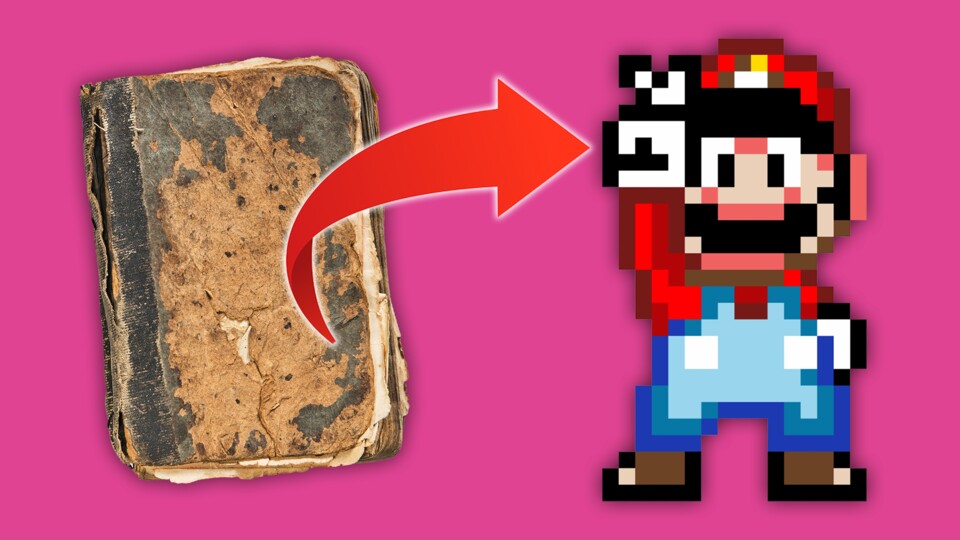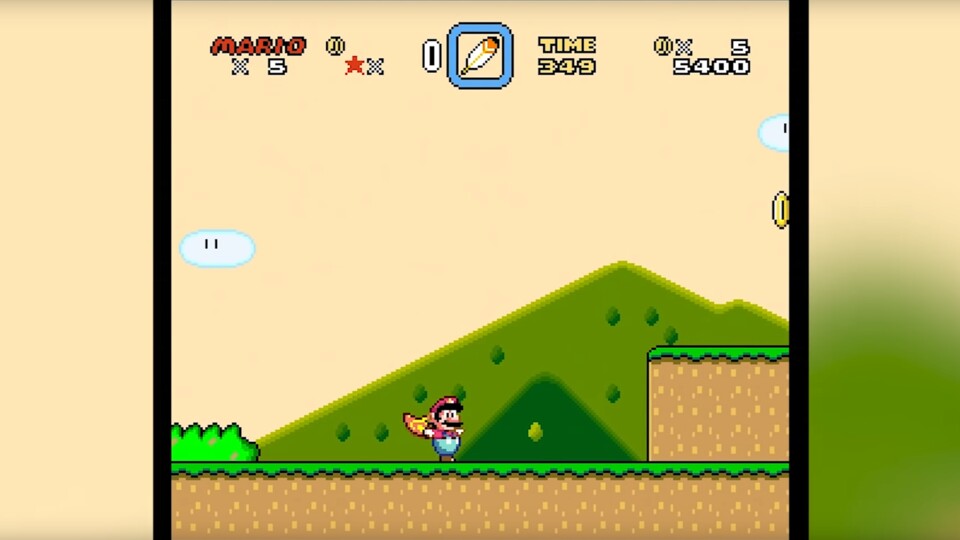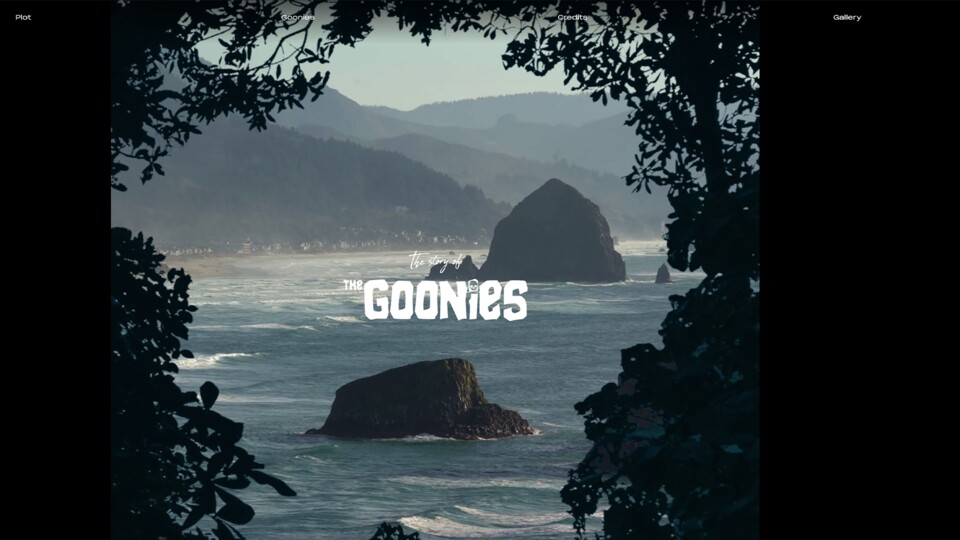
Mario actually has something in common with a book that’s almost 200 years old. (Image: Karjalas – adobe.stock.com, Nintendo)
What do a 19th century German book and Super Mario games have in common? At first glance, nothing really.
However, on Reddit, a user by the name of shankingsh came across an interesting book that used an optical effect around 1830 that would only revolutionize 8- and 16-bit gaming around 150 years later.
0:37
A German book from around 1830 uses an effect that was also used in game design
The book “The Rhine Valley from Bingen to Lurley” (a variant of the name Loreley) can be seen in the video. However, it doesn’t read like a conventional book, but can be opened like an accordion. Through a narrow slit on the cover you can then look through the many layers and experience the Rhine Valley from Bingen to the Loreley – at least theoretically.
The depth is created by the slit and the individual sides, which are increasingly distant from the viewer. This is called the parallax effect.
What are Parallax?
Basically, the parallax effect is explained very simply: If an object is viewed from two different positions against a background, the position of the background in front of which the object lies optically changes.
Translated into the book, this means: The further back the page is, the further away it appears. Here the page moves and not the viewer.
A famous film series makes maximum use of the parallax effect.
An optical illusion makes Gandalf appear taller than Frodo.
Hobbits and dwarves are significantly smaller than humans or elves. To make it look that way, Peter Jackson used so-called “forced perspective,” an optical illusion in which Gandalf appears significantly taller than Frodo because he is positioned closer to the camera.
But what does this have to do with Super Mario?
We have all experienced motion parallax. In perceptual psychology, this refers to the effect when you move parallel to objects in a landscape and they pass by at different speeds.
Imagine this: You sit in the car or train and look out the window. Trees on the side of the path just rush by. You can watch a house in the distance for a long time and the mountain far away only moves past you very slowly.
Parallax scrolling was used in side-scrollers and platformers like Super Mario World to suggest depth. To explain this, look at the following picture:

Sice scrollers use multiple layers to create depth and immersion (Image: Nintendo)
Side scrollers use different layers, i.e. layers that move at different speeds relative to each other. Mario; the platforms on which it runs; the coins and the bush are on one level in the foreground; Hills and clouds in the background.
The foreground always moves as quickly as the character does, while the background moves more slowly to suggest that it is further away. This creates the illusion of depth – just like looking out the window of a train or car.
This YouTube video goes into more detail.
Link to YouTube content
Of course, the book at the beginning of the article only uses the depth effect and no movement, but parallaxes are both.
Has parallax scrolling actually died out with 3D games? In fact, today, apart from indie titles, it is used elsewhere than in game design.
You don’t come across websites with parallax scrolling very often, but they always create a wow factor when you come across them.
Parallax actually often occurs in web design when the page has no subpages and you only scroll down on the homepage. A website about the Goonies, based on the film of the same name starring Sean Astin, uses parallax scrolling to great effect.

Of course, the picture on the film’s website only tells half the story.
You first look at the open sea and then use the mouse wheel to get out of the bushes. The shadows of the plants disappear towards the edge and the image of the reefs comes closer.
Particularly well-known tech manufacturers use parallax scrolling to put their devices in the right light, such as Apple’s Vision Pro AR/VR glasses.
Could it soon replace our television?
The book from 1830 is of course worlds away from virtual reality. In fact, you can even purchase the book if you want to call the great-great-great grandpa of parallax scrolling your own. Cost: approx. 1,750 euros. Or you can simply play your favorite side-scrollers from the 80s and 90s.
Parallax is a wonderful example of how people use effects for entertainment. We used to look through holes at an accordion, today we put on glasses. And which is actually your favorite jump & run? Feel free to write it in the comments if you can get something out of the hopping genre.


 What’s happening with AI? Researcher explains why you can look forward to more creative NPCs, competition for ChatGPT and hot dog tomatoes
What’s happening with AI? Researcher explains why you can look forward to more creative NPCs, competition for ChatGPT and hot dog tomatoes Cowboy launches new on-demand service: That’s what’s inside
Cowboy launches new on-demand service: That’s what’s inside The new 4K Fire TV stick is now brutally reduced and transforms your old television into a smart TV
The new 4K Fire TV stick is now brutally reduced and transforms your old television into a smart TV The best mouse I’ve ever had, convinces me for gaming, work and home office and is different than all its predecessors!
The best mouse I’ve ever had, convinces me for gaming, work and home office and is different than all its predecessors! The first smart glasses suitable for everyday use that you can buy
The first smart glasses suitable for everyday use that you can buy